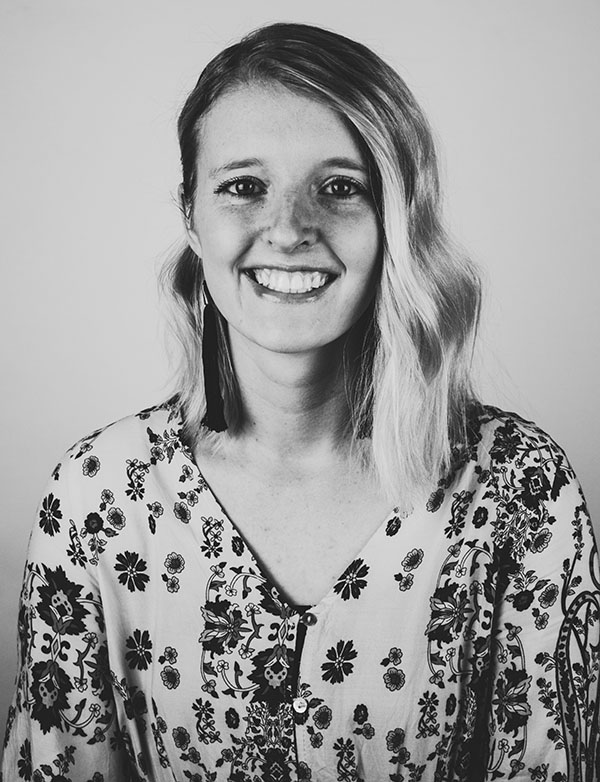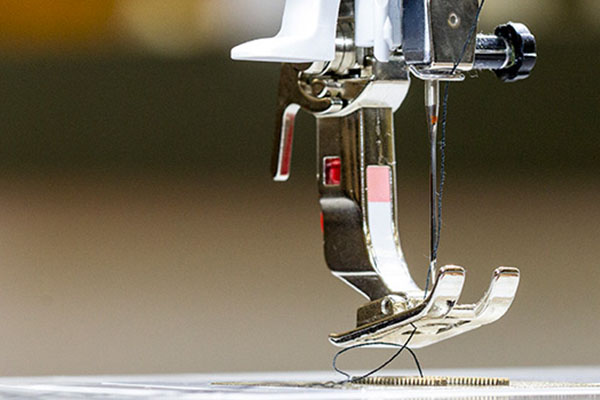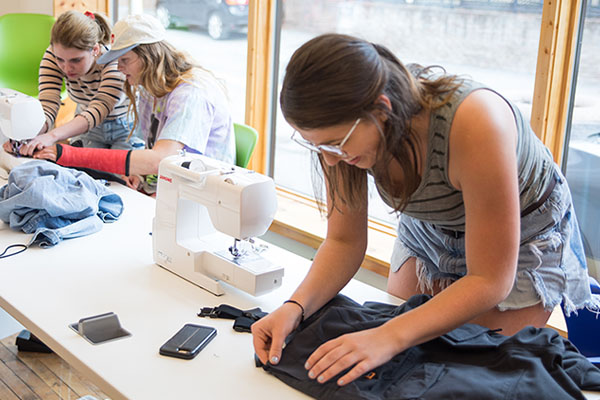BOONE, N.C. — Blakeley Rogers ’17 graduated summa cum laude with a B.S. in apparel design and merchandising, but her education went far beyond academics while at Appalachian State University. She was active in a number of clubs and organizations, and developed an interest in sustainability — particularly concerning apparel design.
Today, she is an assistant technical designer at Carter’s Inc./OshKosh B’Gosh in Atlanta. The company’s commitment to social responsibility was important to Rogers when pursuing a position there, she said.
“I serve on the Sustainable Business Council at Carter’s. Employees from all different departments work on sustainable projects around the office, at our distribution centers, in our factories and in our stores,” she said. “We also focus on social issues that relate to the apparel industry.”
While at Appalachian, Rogers developed an interest in the sustainability angle of apparel design. A pivotal moment came in her first year, when Dr. Nancy Oliver, associate professor in the Department of Applied Design, showed her class the documentary “True Cost,” which is about the exploitation of overseas workers by major Western brands to sell clothing inexpensively — a business model many industry leaders consider unsustainable.
Rogers’ interests in sustainability and social issues were reflected in her internships:
- She interned as a designer with an Atlanta-based company that employs women transitioning out of homelessness or recovering from drug addictions. The women knit scarves, with a portion of profits from sales funding rehabilitation and education programs.
- She was a fashion upcycle instructor for a children’s camp in San Francisco, teaching middle schoolers about basic sewing skills and sustainable fashion.
- Rogers interned with Appalachian’s Creative Unbound, marketing work produced by neurodiverse artists — those with neurological differences such as dyslexia, attention deficit hyperactivity disorder, dyscalculia, autism spectrum, Tourette’s syndrome, etc.
Many of the technical skills Rogers uses daily in her job were taught in her design and production classes at Appalachian, where she learned the basics of apparel construction and how to use design software. She said her professors also taught her the importance of presenting herself in a professional manner in the workplace.
“Some of things that I do as an assistant technical designer include measuring and fitting samples, working in Adobe Illustrator on the graphics that go on children’s clothes, communicating with our partners in China about what samples need to be ordered from our factories and taking notes for technical designers,” she said.
“The thing that I enjoy most about my job is taking part in the fittings. We have babies come in and try on our samples. We take notes on how well the garment meets their needs and if they seem to feel comfortable in it or not. We also get to interact with the parents and see how they feel about dressing their child in the samples that we provide.”
Rogers said, “As a student, I got to know a lot of my professors really well, and not just my apparel ones. I still keep in touch with several of them, and I have found that maintaining those relationships has been extremely beneficial.
“Networking is so important. It is good to build genuine relationships with your peers and professionals in the industry and to take interest in what they are doing.”
While at Appalachian, Rogers was active in several on- and off-campus organizations, in which she built relationships with other students, professors and professionals in the community. These groups included:
- the African Student Association;
- AppSits Meditation Club;
- Appalachian Apparel Association;
- Muslim Student Association;
- Women’s Fund of the Blue Ridge; and
- numerous others.
Cocurricular activities helped shape her worldview, Rogers said. “My involvement in multi-cultural organizations challenged my way of thinking and opened my eyes to the amount of privilege I have in the workforce and in life in general. The experiences I had at Appalachian taught me to be a better ally in my day-to-day life.”
Appalachian tracks where its graduates go, notes high success rate
About the Department of Applied Design
One of seven departments housed in the College of Fine and Applied Arts, the Department Applied Design at Appalachian State University fosters excellence in design education, design research and professional placement. The department balances theoretical and pragmatic approaches while exploring an awareness of impact through design decisions on the global community. Faculty focus on a holistic approach to creative problem-solving by integrating sustainability and ethical responsibility in teaching and practice. The department offers bachelor’s degrees in apparel design and merchandising, industrial design and interior design. Learn more at https://design.appstate.edu.
About the College of Fine and Applied Arts
Appalachian State University’s College of Fine and Applied Arts is a dynamic and innovative group of seven academic departments, bringing together a variety of perspectives, experiences and real-world education to provide unique opportunities for student success. The college has more than 3,500 undergraduate and graduate majors. Its departments are Applied Design, Art, Communication, Military Science and Leadership, Sustainable Development, Sustainable Technology and the Built Environment, and Theatre and Dance. Learn more at https://cfaa.appstate.edu.
About Appalachian State University
As a premier public institution, Appalachian State University prepares students to lead purposeful lives. App State is one of 17 campuses in the University of North Carolina System, with a national reputation for innovative teaching and opening access to a high-quality, cost-effective education. The university enrolls more than 21,000 students, has a low student-to-faculty ratio and offers more than 150 undergraduate and 80 graduate majors at its Boone and Hickory campuses and through App State Online. Learn more at https://www.appstate.edu.
What do you think?
Share your feedback on this story.















